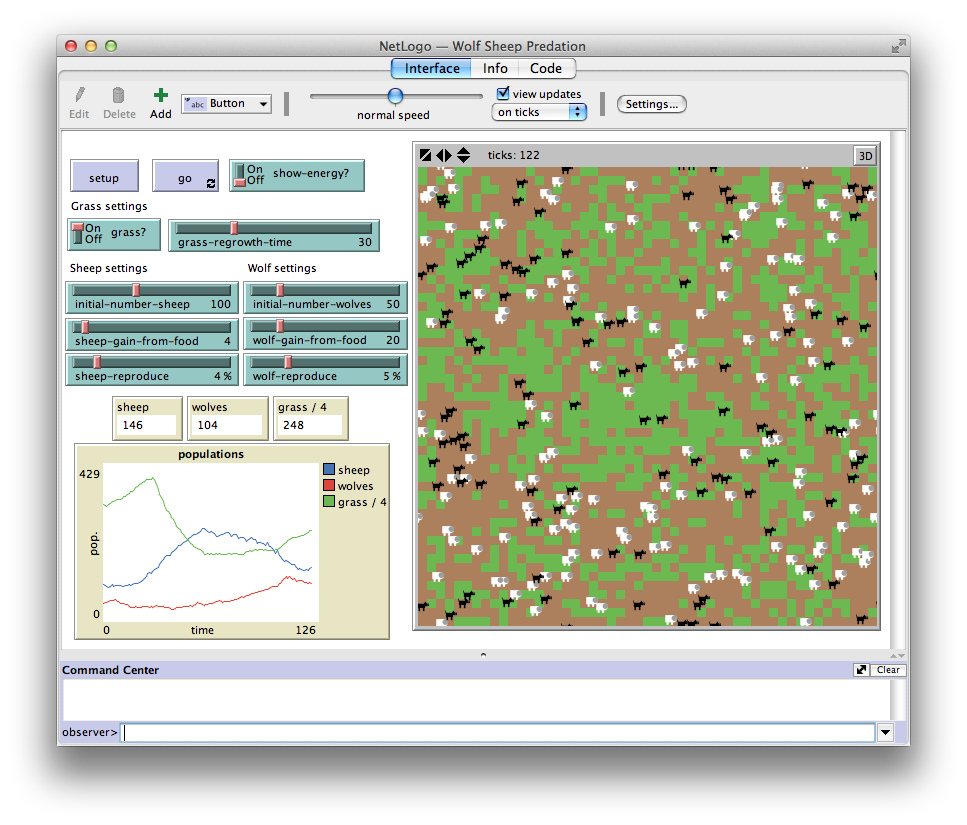

The model implements the GRN as a set of rules. Includes cytokine production and diffusion, Th differentiation and subset determination. A table trough time depending of the nodes.Įach agent represent a CD4+ T cell whose differentiation state depends on an internal gene regulatory network.The nodes colored depending on their state.The model includes three posible views of the network: The model also tracks the effects of the perturbations. It can iterate the network and perturb both the state of the network and the function. The model generates random boolean networks and their functions using links. See evolution in action! Random_Boolean_Network_ogo Iterated prisoner's dilemma, with hatching and death. Sick cells produce cytokines that increase the colagen and cause cirrhosis. ogoĪ model that (kind of) reproduces cirrhosis. Includes a soil quality parameter that restricts the growth of the pines and beetle's migration. Predator-prey model where beetles invade pine trees. There is a strong cooperativity caused bySir2, which means that if a protein is attached to the DNA in the neighborhood the chance to join the DNA increases. Sir2 deacetylates its neighbors, while SAS2 acetylated its neighbors. Sir2 (blue) and SAS2 (red) compete for the deacetylated sites (cyan). Proteins travel randomly, until they find the DNA and stick with a given probability. This model illustrates the competition between the epigenetic silencing caused by deacetylase SIR2 (blue) and activation caused by SAS2 acetyltransferase (red).Īssumes that the DNA is a laticce that can be in two states silenced (cyan) and active (yellow).

Model made as part of "Epigenator" for the 1st Synthetic Biology Workshop 2010 in the CINVESTAV Irapuato. sexual, turtle inherits the color of average of each RGB color of the parents with a probability of mutation.asexual, turtle inherits the color of the parent with a probability of mutation.The turtles can only eat grass that is similar to their color.ĭifferent types of reproduction are included: This is a predator-prey system with the peculiarity that each turtle has a color in the RGB scale. From there, the genome is mapped to HSB (phenotype). The main difference is that now the organisms have a genome with 3 colors corresponding to the RGB scale (genotype). This program is very similar to competenciaHSB. It can be noted that subpopulations of specific colors are generated, and that individuals with intermediate colors disappear. The simulation assigning random colors to initial agents. Both predator and prey where assigned a color in the HSB scale and the restriction that predators can only consume a grass with a similar color. Given the complex relationships between organisms and their ecosystem is not trivial to predict the effects of the organims in the environment.Ī predator -prey model with a motionless prey (grass ) and a mobile predator ( turtle) was constructed. Organisms alter the environment, however they don't have the same impact on all ecological variables.


 0 kommentar(er)
0 kommentar(er)
